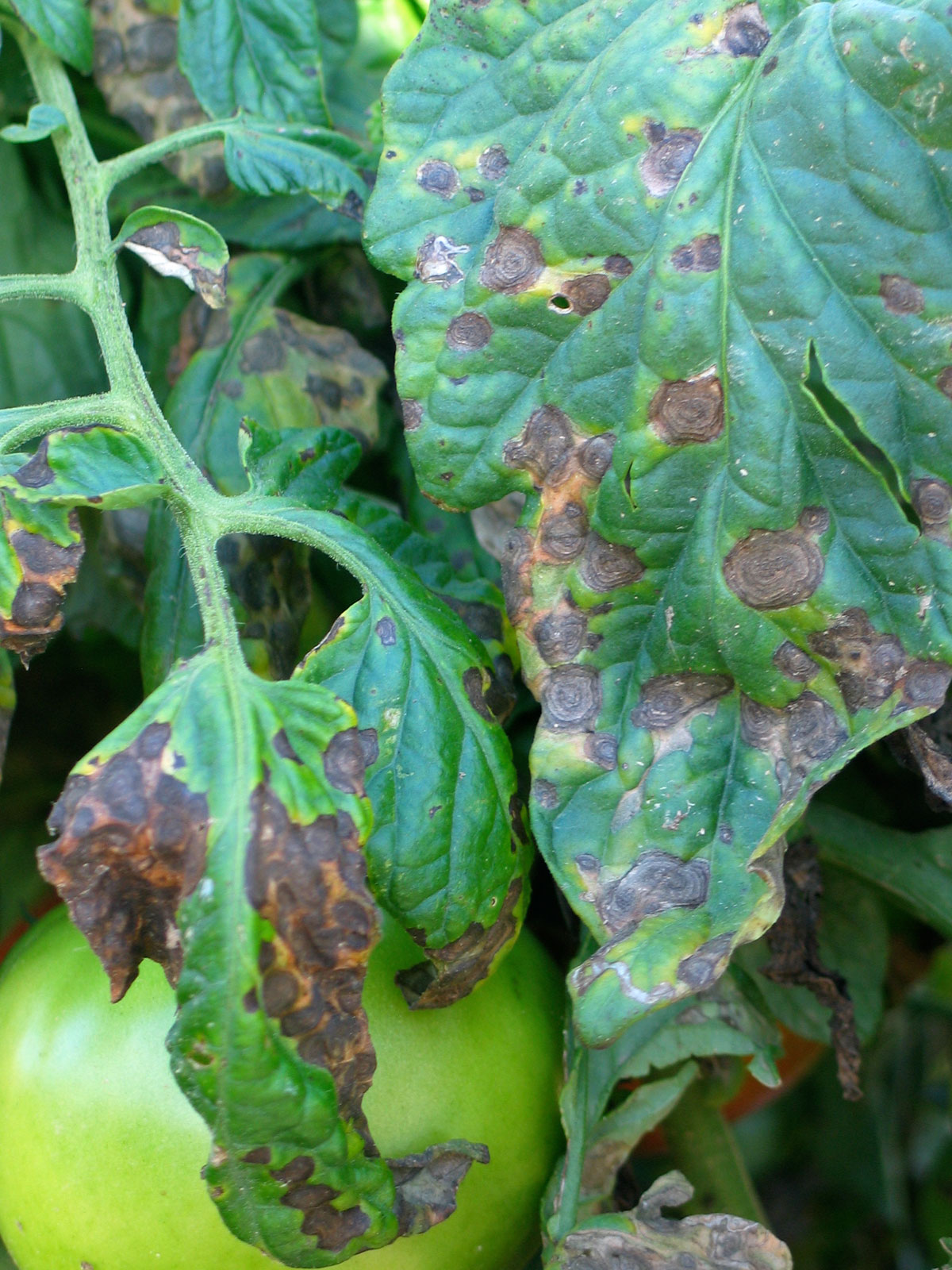

Symptomatic leaves can be sealed in a plastic bag with a damp paper towel overnight, then checked for a gray to white moldy growth on the underside. Key diagnostic features on foliage are lesions that are not stopped at leaf veins. Cool nights and warm days, with moist weather, are ideal for disease development. The late blight fungus prefers temperatures from 15- 21☌ (59- 70☏).

There are several strains of the fungus, some that infect potatoes only, some that infect tomatoes primarily but many that infect both crops.
TOMATO BLIGHT ONTARIO PATCH
Lesions on tomato fruit first appear as a grey, water soaked greasy patch that turns brown and sunken. Under favourable conditions, entire crops can be destroyed within 5 – 7 days.įigure 3. Water soaked greasy patches develop on the top or along the sides of infected tomato fruit eventually becoming sunken and developing into a dry brown rot (Figure 3). On stems and leaf petioles, late blight lesions appear chocolate brown (Figure 2). During warm wet or humid conditions the lesions expand rapidly and often appear as a brown necrotic spot surrounded by a light green or yellow halo (Figure 1). Symptoms first appear as water soaked grey lesions on leaves and stems of tomato and potato plants. Do not transport infected plants through the field without placing them in a garbage bag first. If a few infected plants in a patch are found, it is best to pull out the infected plants, place them in garbage bag and dispose of them away from the field prior to spraying an effective fungicide. Scouting fields for diseased plants is also recommended at this time. The disease is best kept under control when fungicides are applied prior to the arrival of the pathogen and infection. With the arrival of late blight into Ontario it is important that all tomato and potato growers apply an effective fungicide to protect their crops on a regular basis. Foggy weather with intermittent thunder storms together with warm temperatures not to mention dew formation during the morning are ideal conditions for infection, disease development and potential spread. This disease can destroy unprotected tomato and potato crops within one week under ideal conditions and is the same disease that contributed to the Irish potato famine during the 1840’s. In fact, the late blight epidemic during 2009 has been referred to by some researchers as “the worst in modern history due to a “perfect storm” of widespread inoculum distribution and conducive weather.” Warm dry conditions that occurred in August of 2010 held the disease for most of the summer, however, the cool wet weather that occurred last September revived the disease and resulted in significant yield losses to several organic tomato growers at the end of the season. Some tomato growers, particularly organic tomato growers, lost significant yields in 20 due to late blight. It was only a matter of time before it showed up in Ontario. The disease has been spreading around several US states this spring and summer. Late blight has been confirmed in a tomato field in Essex County, Ontario. Michael Celetti, OMAFRA, Plant Pathologist – Horticulture Crops Program Lead


 0 kommentar(er)
0 kommentar(er)
